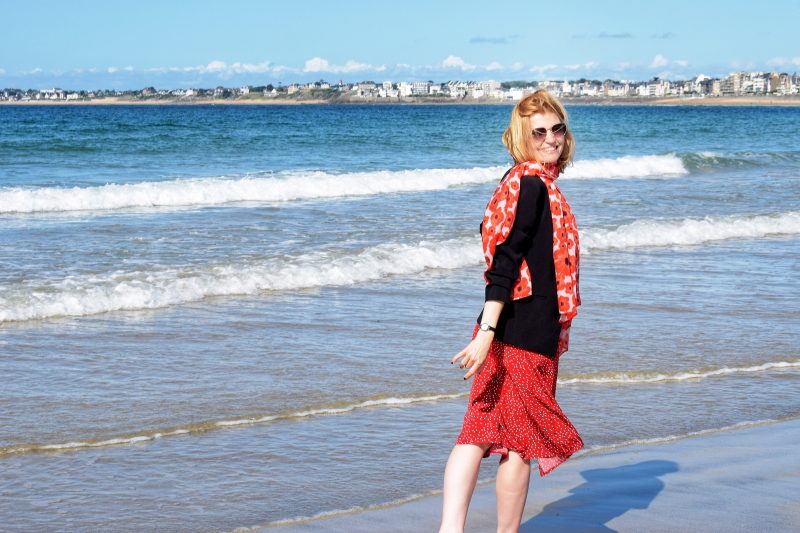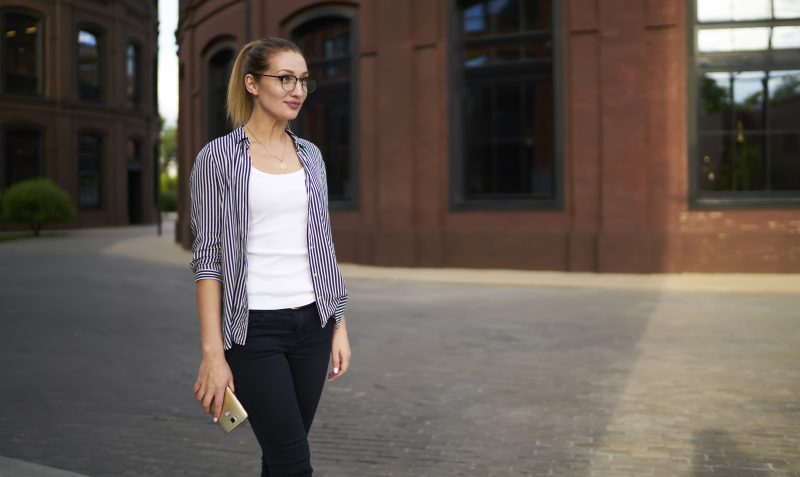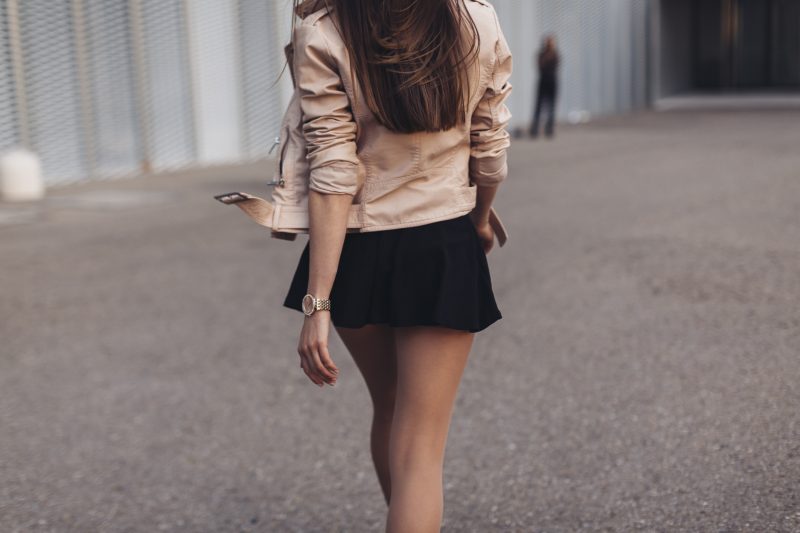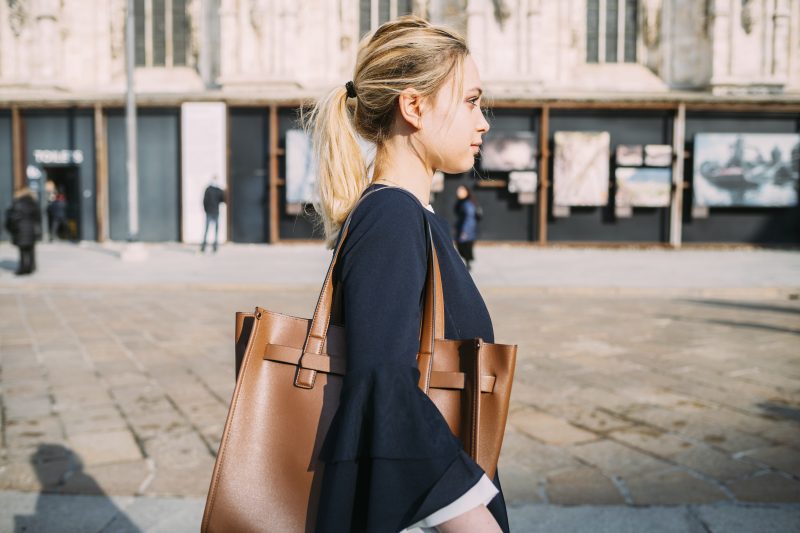It was 7:30 AM on a Tuesday when I spotted her on the L train. Middle-aged woman, silver-streaked bob, crisp white linen shirt with the sleeves casually rolled up—textbook coastal grandmother vibes. But then my eyes traveled downward and… wait, were those technical hiking pants? With a carabiner keychain? And were those—I nearly dropped my coffee—actual Salomon trail runners on her feet? I must have been staring because she caught my eye, smiled, and adjusted her tortoiseshell reading glasses before returning to her dog-eared copy of Ann Patchett. That’s when it hit me: Coastal Gorpmother had entered the chat.
Listen, I’ve been covering fashion trends for nearly a decade, and I’ve seen some weird shit.
Remember when we all suddenly decided clear plastic jelly shoes were cool again in 2018? Or that brief, traumatic period when low-rise jeans threatened to make their comeback? (Spoiler alert: they eventually did, and my lower back has been cold ever since.) But this collision of coastal grandmother—that Diane Keaton-inspired, Nancy Meyers movie aesthetic of wealthy ease and beachfront property ownership—with gorpcore—the outdoor technical gear movement beloved by Brooklyn dads and actual mountain climbers alike—wasn’t on my 2025 bingo card.
And yet, here we are.
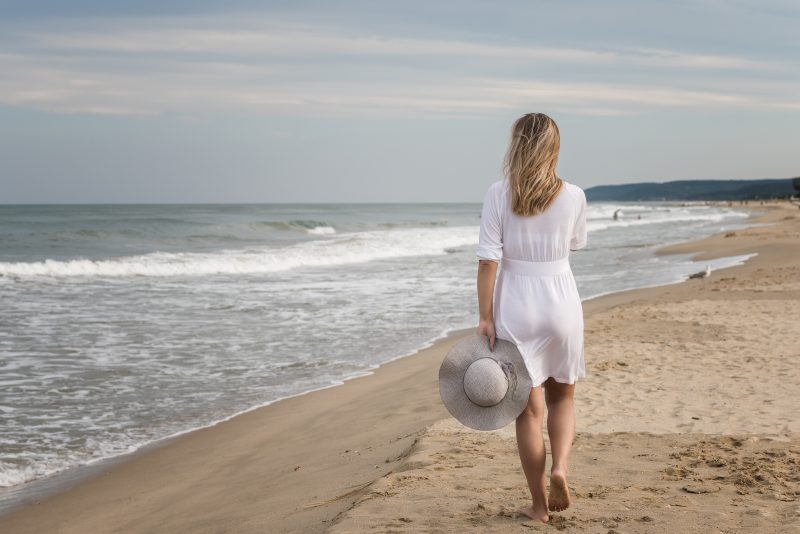
I texted my editor Katherine immediately: “Just saw a woman reading literary fiction in Salomons and linen. Coastal Gorpmother is happening. I need to write about this.” Her response was typical Katherine efficiency: “1200 words. Friday. Don’t make it weird.” Too late for that, obviously.
For the uninitiated (bless you, how’s the weather under that rock?), coastal grandmother exploded as an aesthetic around 2022—all neutral linens, straw market baskets, and an air of having a very good divorce lawyer on retainer. It’s the look of someone who has both a bread starter named after their first pet and a vacation home in Cape Cod. Meanwhile, gorpcore (which gets its name from “Good Ol’ Raisins and Peanuts,” that trail mix staple) embraces technical outdoor gear from brands like Patagonia, Arc’teryx, and North Face worn in decidedly non-outdoorsy settings like, you know, getting oat milk lattes or attending experimental theater.
They’re basically aesthetic enemies. Coastal grandmother says “I summer in Martha’s Vineyard,” while gorpcore says “I could survive in the wilderness if society collapses, but mostly I just like pockets.” One aesthetic is aspirational leisure; the other is performative preparedness.
So who the hell started mixing them?
To find out, I did what any self-respecting fashion editor would do: I abandoned all deadlines and spent three days deep-diving through Instagram, TikTok, and—God help me—even BeReal, looking for the origins of this sartorial collision.
The first real evidence I found was from Marissa Chen, a 43-year-old architect from Seattle who posted a TikTok captioned “When your Eileen Fisher meets your REI addiction” back in January. The video showed her styling a flowy beige linen tunic with technical zip-off hiking pants and Merrell boots. It had 2.3 million views.
“I honestly didn’t think I was doing anything revolutionary,” Marissa told me when I called her. “I just got tired of changing my entire outfit between walking my dog on the muddy trails behind my house and meeting clients for lunch. One day I just… didn’t change. And people lost their minds.”
From there, the trend spread like wildfire among a very specific demographic: women over 35 who have both disposable income and a pragmatic attitude toward clothing. The sweet spot, apparently, is Gen X women who grew up camping but now have Lower East Side apartments with Le Creuset cookware displayed on open shelving.
Emma Zhou, trend forecaster at Future Pulse, attributes the rise of this aesthetic mashup to several factors: “Post-pandemic, we’ve seen a blurring of functionality and comfort with style. The coastal grandmother already valued comfort, but gorpcore adds true utility. Plus, climate anxiety is real—people want to look like they could hop on their yacht OR survive extreme weather events at a moment’s notice.”
That tracks. My own mother, a dedicated coastal grandmother devotee who owns no fewer than seventeen beige cardigans, recently asked me if I thought she “could pull off those funny-looking but apparently very good hiking sandals from Chaco.” I nearly choked on my wine.
The fashion industry, never one to miss a commercial opportunity, has naturally jumped on this bandwagon faster than Anna Wintour dismisses an assistant who brings her room-temperature coffee. Eileen Fisher’s latest collection features technical fabrics in their signature flowy silhouettes. Outdoor brand Cotopaxi released a “Coastal Expedition” line with windbreakers in subdued cream and taupe colorways. And just last month, J.Crew—the ultimate coastal preppy brand—collaborated with Hoka on a limited-edition walking shoe that sold out in four hours.
For research purposes (and absolutely not because I wanted them desperately), I managed to snag a pair of those J.Crew x Hoka shoes. They’re the color of sand with tiny embroidered sailboats on the heel tab. They’re ridiculous. They’re perfect. I’ve worn them every day for two weeks.
“It’s a trend that actually makes sense,” says Miguel Flores, menswear designer turned coastal gorpcore convert. “I used to dress like I was perpetually heading to a yacht club despite having never been on a yacht. Now I dress like I’m heading to a yacht club but might have to hike there if my Uber cancels. It’s evolution, baby.”
To really understand this trend, I knew I had to go to ground zero: The Hamptons. So last weekend, I convinced my editor it was absolutely essential I expense a train ticket to East Hampton (thanks, Katherine!) to observe coastal gorpmothers in their natural habitat.
What I found was… well, kind of amazing? At Jack’s Coffee on Main Street, I counted six women in their 40s and 50s wearing some variation of the look: linen pants with Gore-Tex jackets, gauzy dresses with technical sandals, wide-brimmed sun hats paired with waterproof crossbody bags featuring approximately 800 pockets.
“Oh, this old thing?” said Diane, 52, gesturing to her outfit when I approached her for an impromptu interview. She was wearing a butter-yellow linen jumpsuit with Teva Hurricane sandals and a North Face fanny pack slung crossbody. “My daughter makes fun of me, says I look like I’m ready for a yacht club meeting that might turn into an emergency hike. But then she borrowed my Patagonia fleece last week, so who’s laughing now?”
The brilliance of this trend—and I hesitate to admit this because I pride myself on being cynical about all things fashion industry—is that it’s actually wearable. And practical. Words rarely associated with trends that catch fire on social media.
It works because both aesthetics already embraced certain commonalities: comfort, quality materials, and a certain IDGAF attitude that comes with age and financial security. The coastal grandmother never cared about looking “sexy” in the conventional sense; her power move was suggesting she had both a bread starter AND an impressive stock portfolio. The gorpcore enthusiast’s power move was similar—suggesting they had both urban know-how AND could filter water from a stream if necessary.
Put them together and you get an aesthetic that says: “I could host a dinner party for twelve OR survive in the wilderness for a week with just what’s in my many, many zippered pockets.”
As with any trend, there are levels of commitment. Entry-level coastal gorpmothers might just pair their linen pants with Birkenstock Boston clogs (the gateway drug of outdoor footwear). Mid-level adopters mix Eileen Fisher with Patagonia and own at least one technical fabric hat with UPF protection. The advanced coastal gorpmother has a collection of carabiners despite never having climbed anything more challenging than the stairs to their beach house, and refers to their linen-blend hiking pants as “investment pieces.”
“The key is balance,” advises stylist Taylor Reed, who has embraced the aesthetic both professionally and personally. “You want one statement gorpcore piece—like a really technical-looking vest with visible zippers—with otherwise classic coastal pieces. Or vice versa: your statement piece can be very coastal, like a dramatic wide-leg linen pant, paired with more subdued technical pieces.”
Reed’s go-to formula? “A crisp button-down, slightly oversized, half-tucked into tech hiking shorts, with Teva or Chaco sandals. Finish with minimal gold jewelry and a market tote that’s actually a waterproof dry bag. Chef’s kiss.”
I’ve started spotting the trend everywhere now. The woman at my local farmer’s market wearing Arc’teryx with pearls. My yoga instructor in her linen pants and trail runners. Even celebrities aren’t immune—I nearly dropped my phone last week when I saw photos of Meryl Streep wearing what appeared to be technical hiking pants with her signature coastal sophistication while walking her dog in Manhattan.
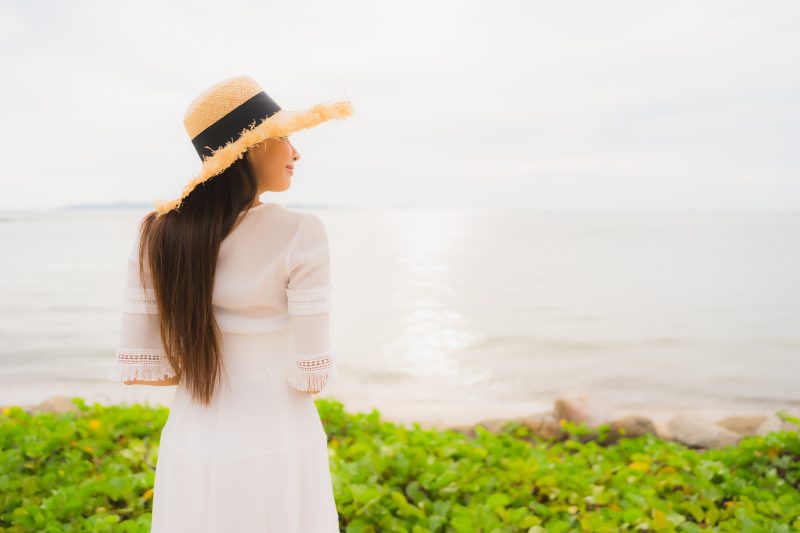
Will it last? Who knows. Fashion is fickle, and by the time you read this, we could all be dressing like Victorian chimney sweeps or space colonists. But there’s something oddly satisfying about this particular trend collision. It feels less like a flash-in-the-pan TikTok aesthetic and more like a genuine evolution in how a certain demographic of women want to dress: comfortably, practically, but with an air of having their shit extremely together.
As I was leaving the Hamptons (my “research” complete), I spotted an elegant older woman walking along the beach. White linen tunic, straw hat… and what appeared to be waterproof hiking boots. She had a fancy leather tote in one hand and a serious-looking water bottle with a carabiner in the other.
I smiled to myself, mentally added “technical hat” to my shopping list, and headed for the train.
Coastal gorpmother summer, here I come. Just don’t tell my dad I’m finally embracing the hiking gear he tried to get me to wear for the entirety of my teenage years. He’d never let me hear the end of it.
